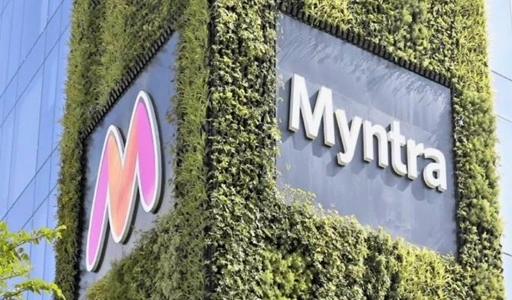Myntra, one of India’s largest online fashion retailers, has grown to become a key player in the country’s e-commerce ecosystem. Founded in 2007 and acquired by Flipkart in 2014, Myntra initially focused on selling personalized products but quickly shifted to the booming online fashion market. With a wide range of apparel, footwear, accessories, and cosmetics, Myntra has established itself as a go-to platform for fashion-conscious consumers. Competing with global giants like Amazon Fashion and homegrown platforms like AJIO, Myntra faces a dynamic environment with both opportunities and challenges. This SWOT (Strengths, Weaknesses, Opportunities, Threats) analysis explores Myntra’s current market position and future outlook in an evolving e-commerce and fashion landscape.

Strengths
1. Strong Brand Recognition and Market Leadership:
Myntra is one of India’s most recognized and trusted fashion e-commerce brands. Known for its diverse offerings and trendy products, Myntra enjoys high brand recall among urban and millennial customers, who make up a large part of its customer base. Its strong brand presence gives it an advantage over newer players and establishes it as a leader in the online fashion retail segment in India.
2. Extensive Product Range and Exclusive Partnerships:
Myntra offers a wide selection of fashion and lifestyle products across various categories, including clothing, footwear, accessories, and beauty products. It has exclusive tie-ups with international brands like H&M, Forever 21, and Nike, as well as a portfolio of private labels such as Roadster, HRX, and All About You. These exclusive partnerships and private brands not only add variety to Myntra’s catalog but also contribute to higher profit margins.
3. Robust Omnichannel Strategy and Tech-Driven Innovations:
Myntra’s parent company, Flipkart, provides it with logistical support and an extensive supply chain, allowing Myntra to adopt an effective omnichannel strategy. Additionally, Myntra uses technology to enhance customer experience through features like AI-driven personalization, virtual try-ons, and AR-enabled experiences. Its Myntra Studio, a social commerce feature, allows users to view fashion trends, get styling advice, and shop via an interactive platform, creating an engaging shopping experience.
4. Large Customer Base and Effective Marketing Campaigns:
Myntra’s marketing strategies, including celebrity endorsements and influencer collaborations, have helped build a loyal customer base. Campaigns such as the “End of Reason Sale” have become popular events, attracting millions of shoppers and reinforcing Myntra’s position as a fashion leader. With a dedicated customer base and effective promotions, Myntra consistently drives high traffic and sales on its platform.
Weaknesses
1. High Dependence on Urban Markets:
Myntra’s primary customer base is concentrated in India’s metro and Tier 1 cities, where disposable incomes are higher, and there is a greater inclination toward branded fashion. This reliance on urban markets limits Myntra’s reach to the broader population in Tier 2 and Tier 3 cities, where the majority of India’s consumers reside. Expanding in these areas presents a challenge due to price sensitivity and limited internet accessibility.
2. High Return Rates and Logistical Costs:
One of the major challenges in the fashion e-commerce sector is the high return rate, and Myntra is no exception. Due to issues related to sizing, style mismatches, and quality expectations, Myntra faces a high volume of returns, which increases operational costs. Additionally, the logistics involved in delivery and returns management can impact profit margins, as fashion is a high-touch, logistics-intensive sector.
3. Limited Product Range in Non-Fashion Segments:
While Myntra is strong in the fashion segment, it has limited offerings in categories like electronics, home décor, and essentials, which are popular among customers shopping on platforms like Amazon and Flipkart. This limited product range makes Myntra vulnerable to losing customers to competitors who provide a more comprehensive shopping experience. Diversification could provide Myntra with additional revenue streams and help retain customers who seek variety.
4. Dependence on Parent Company for Funding and Infrastructure:
Myntra benefits from Flipkart’s infrastructure and financial support, which has helped it grow rapidly. However, this dependence on its parent company also limits Myntra’s autonomy and creates potential challenges if Flipkart’s priorities shift. Any changes in Flipkart’s strategic direction or resource allocation could impact Myntra’s operations and expansion plans.
Opportunities
1. Expansion into Tier 2 and Tier 3 Cities:
India’s Tier 2 and Tier 3 cities represent significant growth opportunities for Myntra, as fashion awareness and disposable incomes are increasing in these areas. By introducing affordable product lines and leveraging localized marketing, Myntra can tap into this vast market. Initiatives like vernacular language support, regional marketing campaigns, and influencer tie-ups in these regions could help Myntra capture a new customer base.
2. Growth in Beauty and Personal Care Segment:
The beauty and personal care market in India is booming, with rising demand for skincare, makeup, and grooming products. Myntra has already ventured into this segment but has the potential to expand further. With exclusive partnerships, private labels, and a curated beauty platform, Myntra can become a strong player in beauty e-commerce, catering to consumers seeking premium, affordable, and sustainable options in this category.
3. Focus on Sustainable and Eco-Friendly Fashion:
With consumers becoming more environmentally conscious, there is an opportunity for Myntra to invest in sustainable fashion and eco-friendly products. By promoting sustainable collections and partnering with ethical brands, Myntra can attract a new demographic of environmentally conscious consumers. Private labels focused on sustainability, recyclable packaging, and promoting “green” fashion can strengthen Myntra’s brand image in this space.
4. Growth in Social Commerce and Influencer Marketing:
Social commerce is rapidly growing in India, with consumers increasingly discovering and purchasing products through social media platforms. Myntra’s social commerce platform, Myntra Studio, offers a unique space for influencer-driven content, product reviews, and style recommendations. Expanding social commerce features, influencer partnerships, and interactive shopping experiences could help Myntra engage with younger, digital-first consumers and drive sales.
Threats
1. Intense Competition from E-Commerce Giants and Local Brands:
Myntra faces stiff competition from both international and local players, including Amazon Fashion, AJIO, Tata Cliq, and Meesho. With the e-commerce market in India becoming more competitive, Myntra has to continuously innovate to retain its market share. Competitors’ ability to offer similar products at lower prices or through a wider selection of categories poses a constant threat to Myntra’s position.
2. Changing Consumer Preferences and Price Sensitivity:
The fashion industry is highly influenced by changing consumer preferences, and any shift in trends or demand could impact Myntra’s business. Additionally, the Indian market is extremely price-sensitive, and an economic slowdown or inflation can lead to reduced discretionary spending on fashion. Myntra’s success depends on its ability to offer value-driven, affordable options without compromising quality, particularly as it expands into smaller cities.
3. Regulatory and Compliance Risks:
E-commerce regulations in India are evolving, with the government imposing stricter rules on data privacy, foreign direct investment (FDI), and anti-competitive practices. These regulations could affect Myntra’s operations, particularly in areas like data privacy, third-party seller partnerships, and foreign ownership restrictions. Compliance with these regulations can increase operational costs and may impact Myntra’s growth trajectory.
4. Cybersecurity and Data Privacy Risks:
As a digital-first platform, Myntra collects and manages vast amounts of customer data, making it vulnerable to cybersecurity risks. A data breach or cyberattack could compromise customer trust and result in financial and reputational damage. With increasing scrutiny on data privacy, Myntra must invest in robust security measures and comply with data protection regulations to safeguard its platform and maintain customer confidence.
Future Outlook
The future outlook for Myntra is positive, as India’s online fashion market is projected to grow due to factors like rising internet penetration, increasing disposable incomes, and growing interest in fashion among younger demographics. Myntra’s leadership in the fashion e-commerce space and its established brand identity provide a strong foundation for capturing this growth.
To capitalize on these opportunities, Myntra must expand its reach into Tier 2 and Tier 3 cities, where demand for branded fashion is growing. Offering affordable and regionally relevant products, as well as local language support, will be critical to tapping into these markets. Myntra can strengthen its position by enhancing its logistics network, ensuring timely delivery, and building trust among first-time e-commerce users in these areas.
Additionally, Myntra’s focus on the beauty and personal care segment, along with its social commerce initiatives, positions it well to capture younger consumers who are active on social media platforms. Expanding partnerships with beauty brands, influencers, and social media personalities can help Myntra build a loyal customer base in this high-growth segment.
However, to sustain growth, Myntra must address weaknesses like high return rates and logistics costs. Improving sizing guides, enhancing product descriptions, and investing in customer education could help reduce returns. Additionally, Myntra should focus on expanding its sustainable and eco-friendly offerings, as environmentally conscious shopping gains popularity among urban consumers.
Managing regulatory challenges and cybersecurity risks will be essential for Myntra’s long-term success. As e-commerce regulations tighten, Myntra must ensure compliance to avoid penalties and reputational risks. Moreover, investing in robust data protection measures will help build customer trust and safeguard against potential cyber threats.
In conclusion, Myntra’s strengths in brand recognition, omnichannel presence, and technological innovation provide a strong platform for growth in India’s fashion e-commerce sector. By leveraging opportunities in Tier 2 and Tier 3 markets, expanding in beauty and sustainable fashion, and enhancing social commerce, Myntra can strengthen its position as a leader in the online fashion industry. With a strategic focus on customer experience, operational efficiency, and market expansion, Myntra is well-positioned to thrive in India’s dynamic e-commerce landscape.

